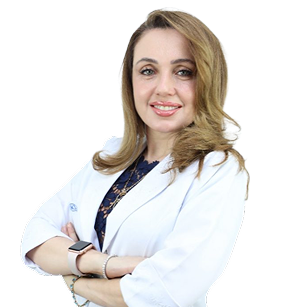Frequently Asked Questions (FAQs)
1. What is Thread Lifting, what are its benefits, and can it be used on all areas of the face?
Thread lifting is a non-surgical cosmetic procedure used to tighten sagging skin and improve its elasticity by inserting absorbable threads under the skin. This procedure helps to lift tissues, reduce wrinkles, and stimulate collagen production for firmer and more youthful-looking skin. Thread lifting can be applied to most areas of the face and neck, but the doctor determines the suitable areas for each person based on their skin type and needs.
2. What is Platelet-Rich Plasma (PRP) treatment, and how is this technique used to improve skin and hair health?
The plasma is utilized from the individual’s own blood, containing a very high concentration of platelets and growth factors. This concentrated plasma is then injected into the targeted treatment area. Therefore, it is used to obtain numerous cosmetic benefits, such as:
1. Stimulating the production of collagen and elastin to improve skin elasticity and youthfulness.
2. Reducing wrinkles and fine lines and restoring radiance to the skin.
3. Improving skin texture and tone, making it look brighter.
4. Supporting hair growth in cases of hair loss or thinning when injected into the scalp.
5. Enhancing skin healing after other cosmetic procedures such as laser treatments or chemical peels.
3. What are the most important techniques used in acne treatment?
There are several modern techniques for treating acne, including:
1. Laser and Light Therapy: Used to reduce bacteria, decrease oil secretion (sebum), and stimulate skin renewal.
2. Chemical Peeling: Used to remove dead skin cells, unclog pores, and reduce pigmentation.
3. Platelet-Rich Plasma (PRP) Injections: Used to accelerate skin healing and stimulate collagen production.
4. Fractional Laser or Ultrasound: Used to improve skin texture and treat acne scars.
The Dermatologist can select the appropriate technique or combine more than one method, depending on the skin condition and type of acne, to achieve the best results.
4. What is a Chemical Peel, and what factors determine its depth and strength?
A Chemical Peel is a cosmetic procedure in which an acidic solution is applied to the skin (usually the face, neck, or hands) to remove the damaged outer layers. The solution causes a controlled exfoliation of the skin, which stimulates cell renewal and the growth of a new, smoother, and more radiant layer.
The types of peels are classified based on their depth of penetration:
1. Light Peels (Superficial): Use mild acids to treat pores, dullness, and superficial pigmentation. Recovery is very fast.
2. Medium Peels: Use stronger acids to target fine wrinkles, acne scars, and moderate discoloration. This requires a longer recovery period.
3. Deep Peels: Use the strongest types of acids and are used to treat deep wrinkles and severe scars. They require careful medical monitoring and a very long recovery period.
5. How do I choose between Botox, Fillers, and Thread Lifting?
The choice depends on the type of wrinkles or concern you want to treat and the desired skin outcome:
1. If wrinkles are caused by muscle movement, such as forehead lines and frown lines, Botox is the best option.
2. If the goal is to fill deep wrinkles or restore lost facial volume, then Fillers are the ideal solution.
3. If the concern is skin laxity and loss of elasticity, Thread Lifting provides a natural lift and stimulates collagen production.
In some cases, the doctor may also combine these techniques to achieve the best results based on your skin condition.


